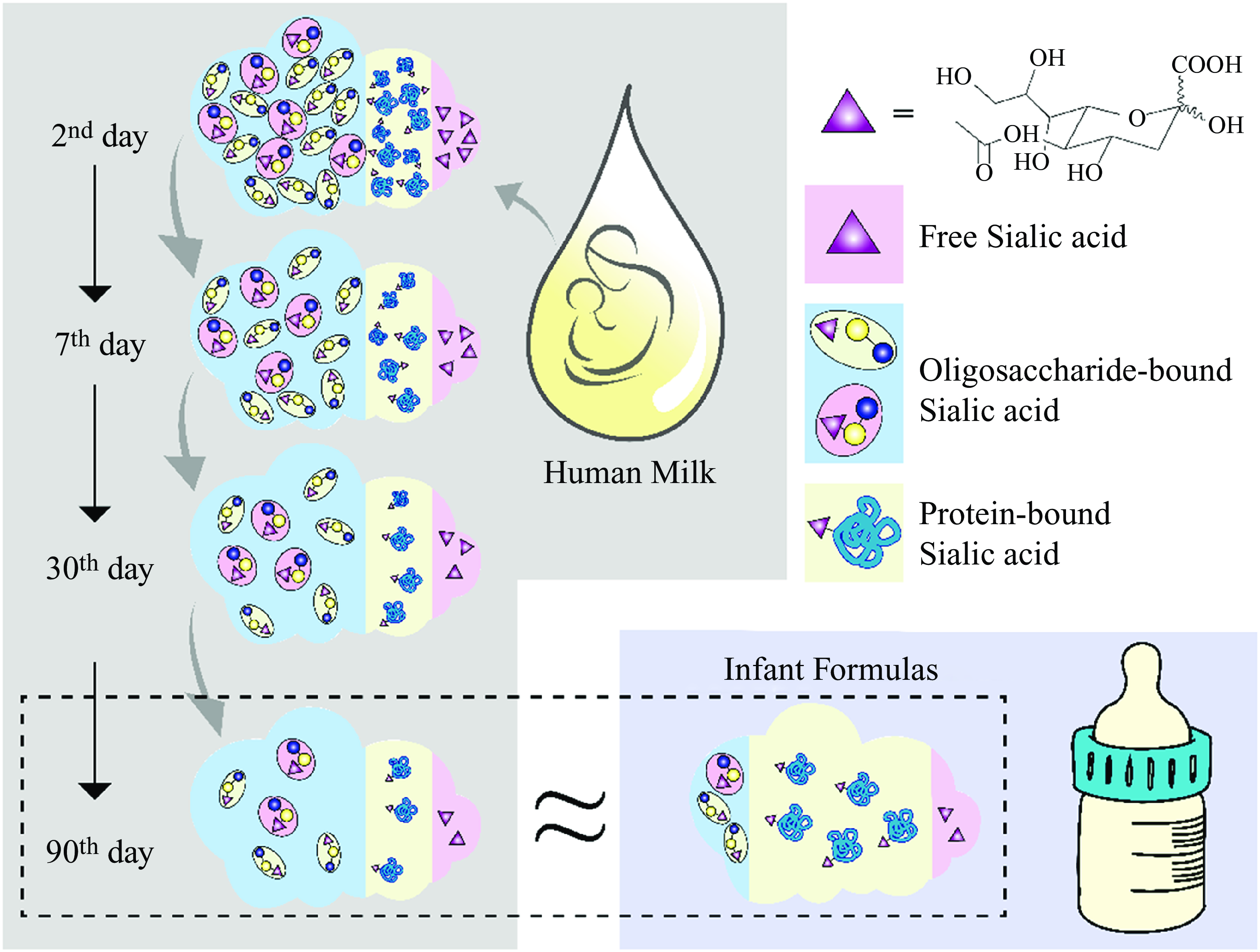Published online by Cambridge University Press: 05 January 2024

This study compared the concentrations, types and distributions of sialic acid (SA) in human milk at different stages of the postnatal period with those in a range of infant formulas. Breast milk from mothers of healthy, full-term and exclusively breastfed infants was collected on the 2nd (n 246), 7th (n 135), 30th (n 85) and 90th (n 48) day after birth. The SA profiles of human milk, including their distribution, were analysed and compared with twenty-four different infant formulas. Outcome of this observational study was the result of natural exposure. Only SA of type Neu5Ac was detected in human milk. Total SA concentrations were highest in colostrum and reduced significantly over the next 3 months. Approximately 68·7–76·1 % of all SA in human milk were bound to oligosaccharides. Two types of SA, Neu5Ac and Neu5Gc, have been detected in infant formulas. Most SA was present in infant formulas combined with protein. Breastfed infants could receive more SA than formula-fed infants with the same energy intake. Overall, human milk is a preferable source of SA than infant formulas in terms of total SA content, dynamics, distribution and type. These SA profiles in the natural state are worth to be considered by the production of formulas because they may have a great effect on infant nutrition and development.
These authors contributed equally.